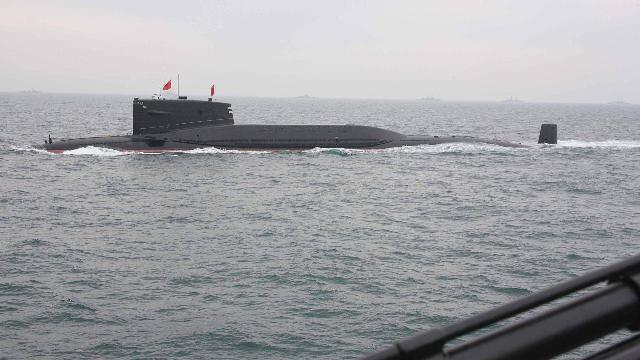China has hundreds of warheads and a wide variety of delivery vehicles.
The launch of China's strategic nuclear submarine on combat duty is an event that usually takes place quietly. But this time, Beijing itself made the fact public. This is a direct response to Washington's aggressive rhetoric and a show of force that speaks to the whole world.: China has everything to protect its interests. How great is the nuclear potential of this country and what is in its arsenals — in the material of Izvestia.
A full-fledged triad
As a rule, China does not advertise the entry of a strategic submarine into the sea. And the fact that this fact has been made public means that China is demonstrating that it has an impressive arsenal.
China already has a full-fledged nuclear triad, having achieved success in mastering all systems for the delivery of special charges.
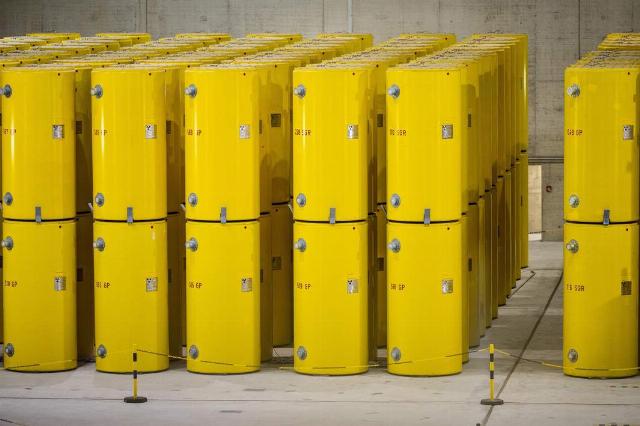
Photo: Global Look Press/Guido Kirchner
Image source: iz.ru
China has land—based intercontinental and medium-range ballistic missiles that can strike with all types of combat equipment - hypersonic, individually guided warheads, and megaton-class heavy warheads. The latter are installed on rockets with liquid and solid fuel engines.
China has nuclear-powered missile submarines and is developing new ones. Moreover, missiles with an intercontinental range are being prepared for them.
Finally, it has aircraft that can carry bombs and missiles with special warheads.
The marine component
China's nuclear forces currently have at least six Type 094 nuclear submarines. Each of them carries 12 solid-fuel missiles, which are similar in capabilities to the American Trident-I and have a range of 8000 km. In terms of their capabilities, submarines of this type are close to our submarines of the 667BDRM project.
But China is not standing still — work is underway on a new Type 096 nuclear missile submarine, which should already be comparable to our Boreas and the American Ohio.
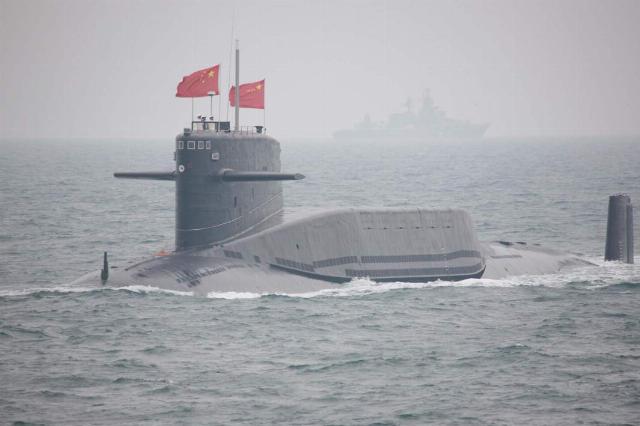
Photo: Global Look Press/Li Gang
Image source: iz.ru
Chinese submarines have been deployed with missiles since 2014. And, of course, the boat's launch the other day was not a premiere.
It can be assumed that China is indeed responding to the nuclear escalation of the American President Donald Trump. But, as in the case of the United States, the actions of the nuclear forces on duty are usually scheduled for many months in advance.
The air component
The aerial part of the Chinese triad is awaiting major changes — a new state-of-the-art carrier aircraft is on the way. China has already created two models of fifth-generation fighter jets and two aircraft, which some analysts attribute to the sixth. In bomber aviation, the strike forces are based on modernized, but already obsolete H-6K/N aircraft built on the basis of the Soviet Tu-16.
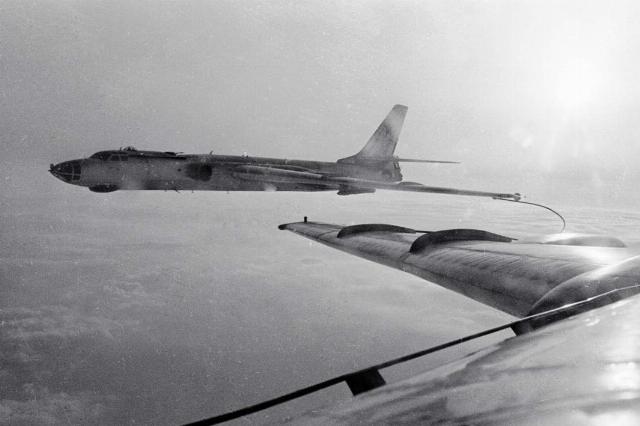
TU-16
Image source: Photo: RIA Novosti/Yuri Ivanov
The latest H-20 stealth bomber is scheduled to take to the air in the coming years, and in the future it will form the basis of China's long-range aviation.
Each H-6K/N carries up to six conventional or nuclear-armed CJ-20 cruise missiles. In terms of their capabilities, they are close to our X-55 or X-101 and can hit targets at a range of up to 2500 km from the launch point. The same aircraft are also carriers of DF-100 hypersonic missiles. Unlike the Russian Dagger, the DF-100 has a more powerful upper stage, since the H-6 carrier aircraft are subsonic and cannot disperse the charge in the stratosphere like our MiG-31. Nevertheless, China has this type of missile with a range of up to 1,500-2,000 km. And they can technically carry a nuclear charge and are an extremely difficult target for modern missile defense. Of course, China's modern long-range aircraft, even with such ammunition, can strike any targets in the western Pacific Ocean, but they are unlikely to reach the continental United States.
The ground component
China has heavy—class intercontinental ballistic missiles on the ground — their Chinese "Satan" is a liquid-fueled Dong Feng-5 rocket with a separable warhead that contains up to eight warheads. The range of action — up to 15 thousand km — allows you to hit any target in America. The DF-5 ICBMs are located deep inside China's territory in mines and are the basis of a retaliatory nuclear potential and a guarantee of non-aggression against China by other nuclear countries.
In other land—based systems, China is striving to take the best trends from its northern neighbor - almost all of them are mobile and solid-fuel. The latest DF-41 heavy mobile missile was first shown in 2019. It is mounted on a multi-axle automobile chassis, as well as in a silo launcher and probably has a railway-based option. It carries up to ten warheads at a range of 15,000 km. It is heavier than the Russian Yars.
The Chinese DF-31 ICBMs are approximately in the same class as our Topol-M and American Minuteman-III complexes. The rocket is also mobile and solid-fuel. It carries from one to three warheads at a range of up to 11 thousand km. The technology level roughly corresponds to the 1990s.
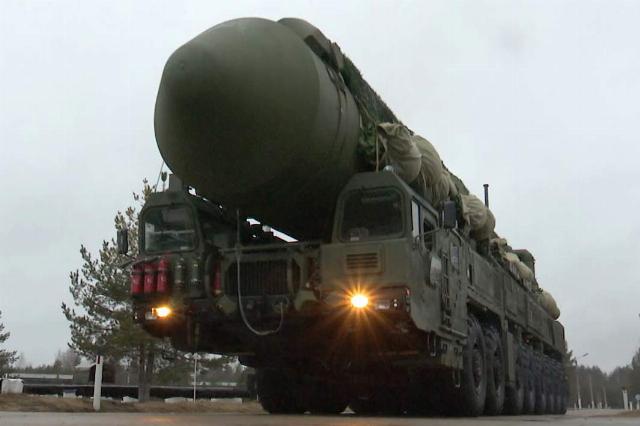
"Yars"
Image source: Photo: Press Service of the Ministry of Defense of the Russian Federation
China has not been limited in the creation of medium-range missiles, and in the 2000s, several types of ammunition of this class were developed there. The DF-26 is a mobile solid—fuel missile with a range of up to 5,000 km, which can target all areas of the Western Pacific Ocean or any of China's neighbors. The DF-17 has a range of 2,500 km and a hypersonic warhead, a gliding unit that cannot be shot down by missile defense forces.
China does not publish data on its nuclear capabilities, and there are no exact figures on the number of warheads it possesses. It is believed that in 2023, the strategic nuclear forces were armed with 500 nuclear warheads. These data are based on an analysis of the number of combat units on land-based and submarine-launched missiles. It is also believed that China is modernizing its nuclear forces and the number of warheads may double by 2030, that is, it will amount to about 1,000 units. The country has the technical capabilities for this. The only question is where these warheads will be aimed in the future.
Izvestia reference
China conducted its first atomic bomb test in 1964 and became the fourth nuclear power after the United States, the USSR and Great Britain. By the mid-1980s, China was still developing a full-fledged nuclear triad, but in terms of the number of special charges, it lagged significantly behind the two main leaders — the United States and the USSR.
For these reasons, when discussing strategic arms restrictions, no one considered China as one of the parties to disarmament.
Now the situation is completely different — China firmly occupies the third place in terms of the number of nuclear warheads and is steadily moving forward, narrowing the gap with the leaders.
Dmitry Kornev
Roman Kretsul
